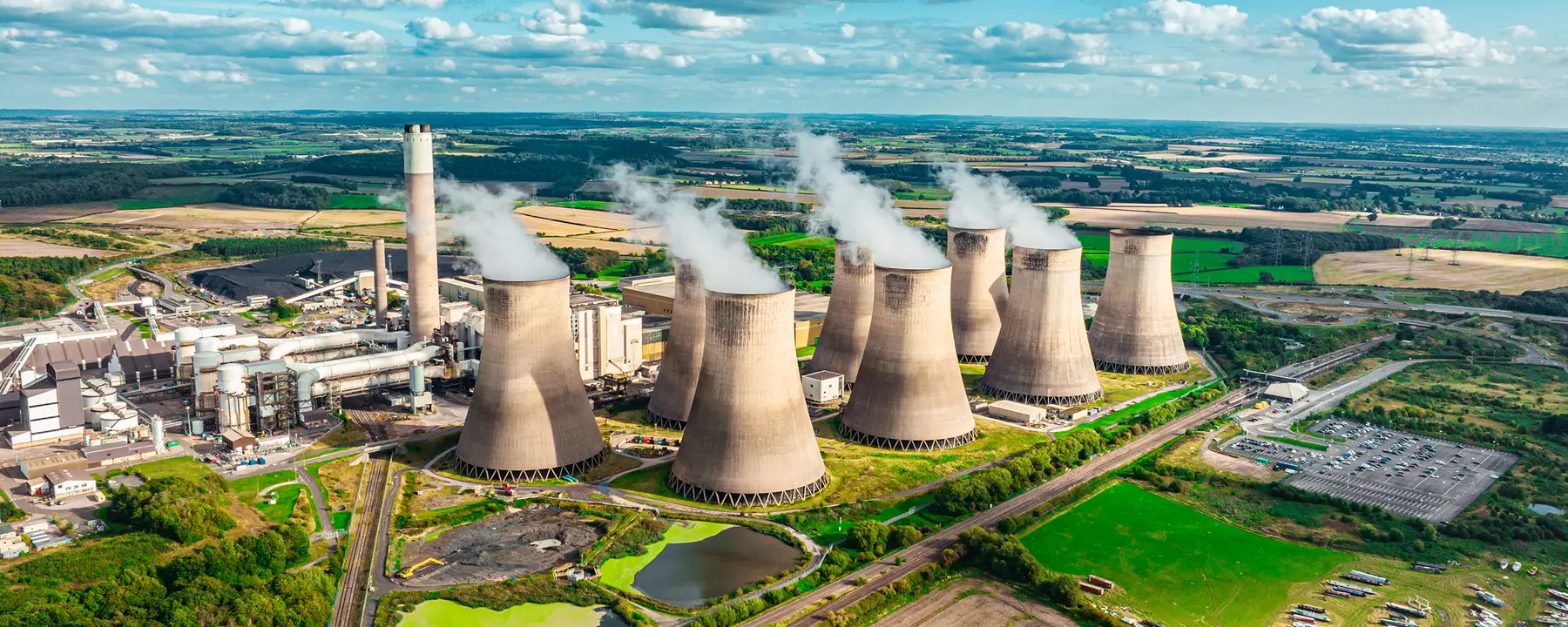Providing commercial and technology development pathways and partners for industrial-scale carbon capture
Objective
Assess the status and trends of carbon capture technologies—a key to decarbonization efforts—from the material to the system level and identify promising partnership opportunities for a leading industrial gas treatment company.
Approach
RTI Innovation Advisors analyzed academic literature, industry reports, patent data, and individual company data to determine the technology trends within the carbon capture space. We used these inputs to evaluate the opportunities and threats to our client and engaged with potential technology development partners.
Impact
Our results aided our client in refining its technology development and partnership strategies, which will lead to higher performing industrial-scale carbon capture systems more likely to be adopted by the market.
Capturing anthropogenic carbon dioxide is key for global decarbonization
Carbon capture and storage is a set of technologies that can capture carbon dioxide either before it is released into the atmosphere (called point source capture) or after it has been released (called direct air capture). Carbon capture technologies have existed for decades, but recent U.S. federal funding and incentives, as well as international governmental support, has led to a resurgence of carbon capture technology development.
How do carbon capture technologies work?
Both point source and direct air capture technologies take in air or gas with some concentration of carbon dioxide. The gas or air is then passed through or across a material called the sorbent, which selectively sequesters carbon dioxide, and releases a gas stream with little-to-no trace of carbon dioxide.
There are a wide range of materials and processes that can be utilized for carbon capture:
- Absorption processes, often utilizing liquid amine sorbents
- Adsorption processes relying upon solid sorbents, including solid amines, zeolites, activated carbon, metal organic frameworks, covalent organic frameworks, and ion exchange materials, among others
- Membrane-based processes that use a wide variety of thin, porous materials
- Cryogenic processes based on temperature gradients
- Hybrid processes mixing any of the above
The successful deployment of point source carbon capture systems across the power (coal and natural gas burning) and industrial (steel, cement, etc.) sectors is a requirement for decarbonizing those sectors and meeting the modeled global 2˚ C warming scenario.
RTI Innovation Advisors provide carbon capture analysis
To better understand opportunities for a decarbonized economy, a confidential client sought the expertise of RTI Innovation Advisors. We informed our client of the challenges and opportunities available to them in the carbon capture sector. This included creating new business, funding opportunities, attracting established companies in adjacent industries, and engaging with startups. We collected key findings from secondary research and stakeholder interviews with researchers and other carbon capture industry experts.
Ideal or one-size-fits-all carbon capture systems are not realistic
To successfully capture carbon dioxide at a high rate from either point sources or the air, there are a huge number of variables to balance, including gas temperature, pressure, contaminants, cost, and concentration of carbon dioxide. These variables require all aspects of the carbon capture system, from the fundamental properties of the sorbent material to the overall process flow, to be repeatedly optimized.
We advised our client that flexibility and diversity will be an asset as they continue to develop their carbon capture technology. Every source of carbon dioxide (i.e., a power plant vs. a steel processing plant vs. the atmosphere) is distinct, which necessitates that the carbon capture system also be customized. The inability to create an “off the shelf” carbon capture system fitting all (or even multiple) use-cases places a high barrier to market adoption.
No one company will push carbon capture to full market adoption
While some companies hope to independently offer a full carbon capture solution, we found that there is a strong appetite for establishing partnerships between organizations interested in developing carbon capture technology. These partnerships allow the development of higher performing systems by leveraging complementary expertise across the various aspects of carbon capture processes.
We identified and interviewed researchers and experts at companies that were likely partnership candidates with capabilities needed to accelerate our client’s technology development. After these interviews, we connected those with synergistic interest in potential partnerships with our client.
There are serious non-technical threats to the adoption of carbon capture technologies
During our analysis, we identified several threats to carbon capture deployment. We advised our client to be aware of these threats and mindful of them during their technology development efforts. These threats are split into two categories: environmental/societal and market hesitancy.
Addressing environmental and social justice concerns in carbon capture and storage:
While carbon capture and storage is highly supported by federal funding and incentives, technology developers must be mindful of the environmental and societal issues that may be a barrier to widely deploying carbon capture. A primary issue is the potential for carbon capture to be used to enable the continued burning of fossil fuels, delaying the transition to renewable energy sources. The pollution and climate change associated with the burning of fossil fuels often disproportionally impacts the health of disadvantaged communities.
Additionally, enhanced oil recovery is a common way to utilize the carbon dioxide captured from power plants or industrial sources. This method continues the cycle of extracting and burning fossil fuels. Beyond the implications of carbon capture on the oil and gas industry, there are serious concerns over the transportation (i.e., pipelines) and environmental impact of long-term storage of carbon dioxide in geologic formations.
Overcoming market hesitancy in carbon capture implementation
The implementation of carbon capture systems requires coordination between multiple stakeholders—the emitter of the carbon dioxide, the capture technology provider, someone to transport the carbon dioxide after capture, and a long-term carbon dioxide storage (or utilization) organization. There is risk and liability associated with each step of the process, and the first mover will likely have to take on the most risk, creating hesitancy. The hesitancy to be a first mover is compounded by the risk adverse and highly regulated nature of the industries most interested in carbon capture (e.g., power generation). Lastly, the costs and facility requirements of carbon capture today are beyond what is needed for wide scale deployment.
There is no winner (yet) in carbon capture
There are current leaders in carbon capture at both the materials development and the system level, but the industry is still in the beginning stage of development. The pilot and demonstration systems are first-generation models that will be iterated upon and optimized. As such, the future of the carbon capture industry is wide open for new entrants and innovative approaches.
Our insights helped our client better understand how to position themselves within the carbon capture market. Our insights will help guide their future approach to technology development and partnership opportunities.
Learn more about RTI Innovation Advisors, Sustainable Energy Solutions, and RTI Center for Climate Solutions.




